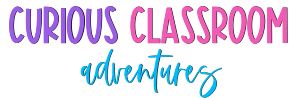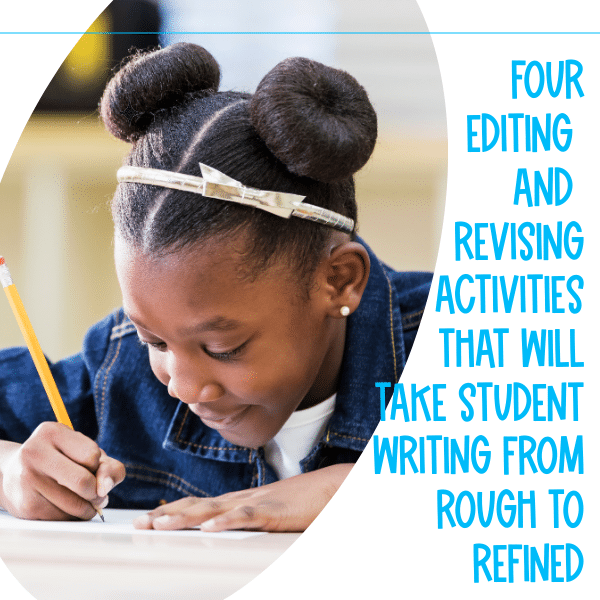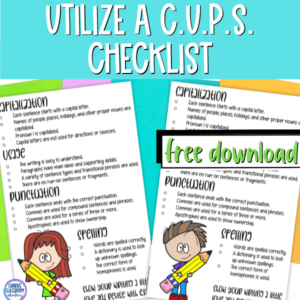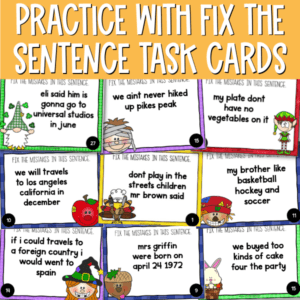To save myself the headache of reading and making notes on all those rough drafts, I using editing and revising activities in my lessons the first week of school and I do some sort of activity with it every week throughout the year. Teaching editing and revising skills has a huge payoff for teachers–after all, we are the ones who have to read the unedited and unrevised papers that get turned in. In this blog post, I’m sharing some of my most practical and engaging strategies for upper elementary language editing and revising lessons.
4 Powerful Editing and Revising Activities
Strategy 1: C.U.P.S. Checklist
C – Capitalization
U – Usage/Grammar
P – Punctuation
S – Spelling
Introduce this free C.U.P.S. checklist to your students as a systematic way to review and refine their writing. Encourage them to use this tool to evaluate their own work and provide constructive feedback to their peers. This strategy instills a sense of ownership in the editing process and helps students internalize the importance of clear and error-free writing, which also means the their writing has improved greatly before it ever reaches my desk.
Strategy 2: Fix the Sentence Task Cards
These Fix the Sentence task cards are simple and straightforward editing and revising activities that help build students’ writing muscles quickly. Each set of task cards covers various aspects of editing, such as punctuation, capitalization, sentence structure, and more. Encourage students to work individually or in pairs to tackle these cards. This interactive approach fosters critical thinking and reinforces important editing concepts. Since I use these year-round, I love having a different set themed for holidays throughout the year.
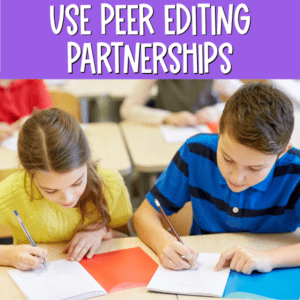
Strategy 3: Peer Editing Partnerships
One of the most powerful editing and revising activities is to pair students up for peer editing sessions. Provide them with clear guidelines on what to look for, based on the specific editing and revising skills you’re focusing on–this is another great way to use the CUPS checklists. Encourage constructive feedback and emphasize the importance of helping each other improve their writing. This collaborative approach not only sharpens editing skills but also strengthens the sense of community within the classroom.

Strategy 4: Focus on Specific Goals
Instead of overwhelming students with a laundry list of editing tasks, provide them with a specific focus for each editing session. For example, one day could be dedicated to improving sentence structure, while another could focus on strengthening vocabulary choices. By breaking down the revision process into manageable chunks, students can approach it with purpose and intentionality.
Using great editing and revising activities is part of cultivating strong writers. By incorporating strategies like the C.U.P.S. checklist, interactive task cards, peer editing partnerships, focused revision goals, and editing stations, you’re providing your upper elementary students with a rich toolkit for refining their writing skills and saving yourself a red pen or two!
